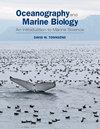Loss, status and trends for coastal marine habitats of Europe
1区 生物学
Q1 Agricultural and Biological Sciences
引用次数: 962
Abstract
Over the centuries, land reclamation, coastal development, overfishing and pollution have nearly eliminated European wetlands, seagrass meadows, shellfish beds, biogenic reefs and other productive and diverse coastal habitats. It is estimated that every day between 1960 and 1995, a kilometre of European coastline was developed. Most countries have estimated losses of coastal wetlands and seagrasses exceeding 50% of the original area with peaks above 80% for many regions. Conspicuous declines, sometimes to virtual local disappearance of kelps and other complex macroalgae, have been observed in several countries. A few dominant threats have led to these losses over time. The greatest impacts to wetlands have consistently been land claim and coastal development. The greatest impacts to seagrasses and macroalgae are presently associated with degraded water quality while in the past there have been more effects from destructive fishing and diseases. Coastal development remains an important threat to seagrasses. For biogenic habitats, such as oyster reefs and maerls, some of the greatest impacts have been from destructive fishing and overexploitation with additional impacts of disease, particularly to native oysters. Coastal development and defence have had the greatest known impacts on soft-sediment habitats with a high likelihood that trawling has affected vast areas. The concept of 'shifting baselines', which has been applied mostly to the inadequate historical perspective of fishery losses, is extremely relevant for habitat loss more generally. Most habitat loss estimates refer to a relatively short time span primarily within the last century. However, in some regions, most estuarine and near-shore coastal habitats were already severely degraded or driven to virtual extinction well before 1900. Native oyster reefs were ecologically extinct by the 1950s along most European coastlines and in many bays well before that. These shellfish reefs are among the most endangered coastal habitats, but they receive some of the least protection. Nowadays less than 15% of the European coastline is considered in 'good' condition. Those fragments of native habitats that remain are under continued threat, and their management is not generally informed by adequate knowledge of their distribution and status. There are many policies and directives aimed at reducing and reversing these losses but their overall positive benefits have been low. Further neglecting this long history of habitat loss and transformation may ultimately compromise the successful management and future sustainability of those few fragments of native and semi-native coastal habitats that remain in Europe.欧洲沿海海洋生境的丧失、现状和趋势
几个世纪以来,土地开垦、沿海开发、过度捕捞和污染几乎消灭了欧洲的湿地、海草草甸、贝类床、生物礁和其他生产性和多样化的沿海栖息地。据估计,在1960年至1995年间,欧洲海岸线每天都有一公里被开发。大多数国家估计沿海湿地和海草的损失超过原始面积的50%,许多地区的峰值超过80%。在一些国家,已经观察到海带和其他复杂的大型藻类的显著下降,有时几乎在当地消失。随着时间的推移,一些主要的威胁导致了这些损失。对湿地影响最大的一直是土地主张和沿海开发。目前对海草和大型藻类的最大影响与水质退化有关,而过去破坏性捕捞和疾病的影响更大。沿海开发仍然是对海草的重要威胁。对于生物栖息地,如牡蛎礁和珊瑚群,一些最大的影响来自破坏性捕捞和过度开发,以及疾病的额外影响,特别是对本地牡蛎的影响。沿海开发和防御已经对软沉积物栖息地产生了已知的最大影响,拖网捕鱼很可能已经影响了大片地区。“转移基线”的概念主要应用于对渔业损失不充分的历史观点,但它与更普遍的生境损失极为相关。大多数栖息地丧失的估计都是指一个相对较短的时间跨度,主要是在上个世纪。然而,在一些地区,大多数河口和近岸沿岸生境早在1900年以前就已经严重退化或濒临灭绝。到20世纪50年代,沿着大多数欧洲海岸线和许多海湾的原生牡蛎礁已经在生态上灭绝了。这些贝类珊瑚礁是最濒危的沿海栖息地之一,但它们受到的保护最少。如今,只有不到15%的欧洲海岸线被认为处于“良好”状态。那些仅存的原生栖息地碎片正持续受到威胁,而对它们的管理通常缺乏对其分布和状况的充分了解。有许多政策和指令旨在减少和扭转这些损失,但它们的总体积极效益很低。如果进一步忽视这一长期的栖息地丧失和转变的历史,最终可能会危及欧洲现存的少数本土和半本土沿海栖息地的成功管理和未来的可持续性。
本文章由计算机程序翻译,如有差异,请以英文原文为准。
求助全文
约1分钟内获得全文
求助全文
来源期刊
自引率
0.00%
发文量
0
期刊介绍:
With increasing interest in the field and its relevance in global environmental issues, Oceanography and Marine Biology: An Annual Review provides authoritative reviews that summarize results of recent research in basic areas of marine research, exploring topics of special and topical importance while adding to new areas as they arise

 求助内容:
求助内容: 应助结果提醒方式:
应助结果提醒方式:


